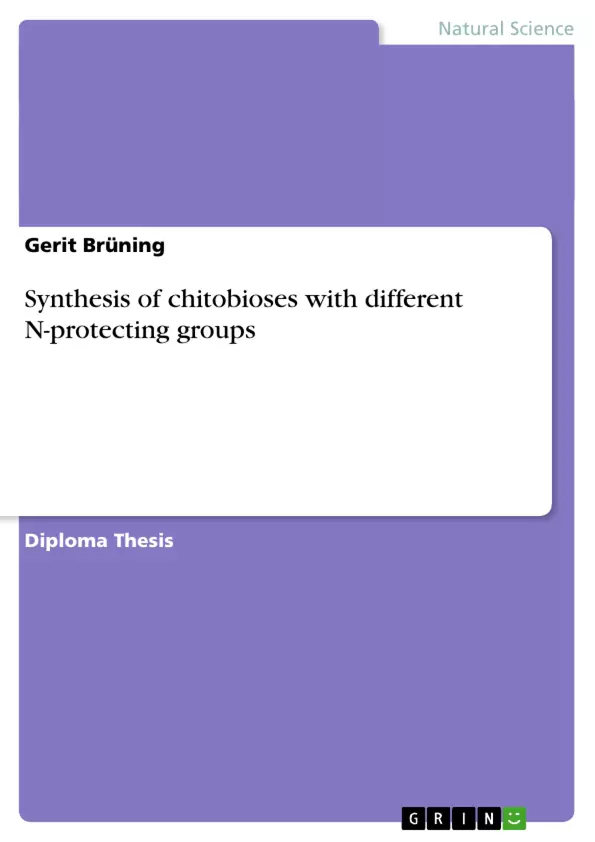The use of four different N-protected derivatives of 2-amino-2-deoxy-Dglucose
as donors and acceptors in glycosylation reactions were described in this work. It was formed the N-benzyloxycarbonyl (Cbz), N-pnitrobenzyloxycarbonyl (PNZ), N-phthalimido (Phth) and Ntetrachlorophthalimido (TCP) protecting glycosides. These were transformed into trichloroacetimidates as glycosyl donors. With the same N-protecting groups were syntheses also the 4-O-unprotected glycosyl acceptors in a one-pot reaction.
The glycosylation reactions were performed in the presence of BF3·Et3O as the
catalyst. The reactions with the chosen donors and acceptors furnished b(1-4)-
linked disaccharides in good yields.[...]
Inhaltsverzeichnis (Table of Contents)
- Abbreviations
- 1. Abstract
- 2. Introduction
- 3. Objective
- 4. Results and discussion
- 5. Summary/Zusammenfassung
- 6. Experimental section.
- 7. References
Zielsetzung und Themenschwerpunkte (Objectives and Key Themes)
This thesis delves into the synthesis of chitobioses, focusing on the development of different N-protecting groups. The overarching goal is to explore the potential of these modified chitobiose derivatives for various applications, particularly in the realm of biomedicine and material science.
- Synthesis of chitobioses with different N-protecting groups
- Exploring the chemical properties of these derivatives
- Investigating potential applications in biomedicine and material science
- Analyzing the influence of different N-protecting groups on the biological activity of chitobioses
- Developing optimized synthetic strategies for the production of these derivatives
Zusammenfassung der Kapitel (Chapter Summaries)
The thesis commences with an introduction that provides a comprehensive overview of the importance of chitobioses and their potential applications in various fields. This is followed by a detailed description of the research objectives and the specific N-protecting groups targeted for synthesis. The core of the thesis resides in the 'Results and Discussion' section, where the experimental details, analytical data, and interpretations of the synthesized derivatives are presented. This section highlights the significance of different N-protecting groups and their influence on the properties of the chitobiose molecules. The final section of the thesis focuses on summarizing the major findings and outlining future directions for research in this area.
Schlüsselwörter (Keywords)
Chitobiose, N-protecting groups, synthesis, biomedicine, material science, glycosylation, characterization, NMR, MS, biological activity, applications, derivatives, organic chemistry, natural product chemistry.
- Citation du texte
- Gerit Brüning (Auteur), 2007, Synthesis of chitobioses with different N-protecting groups, Munich, GRIN Verlag, https://www.grin.com/document/113983



